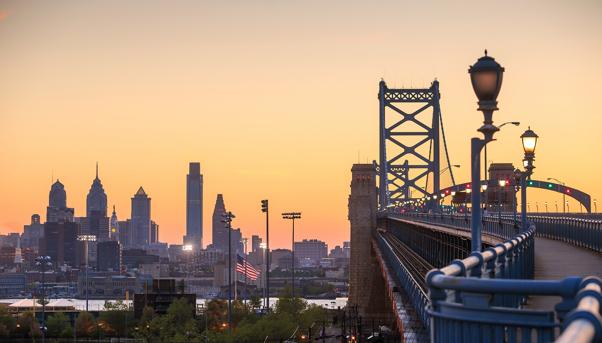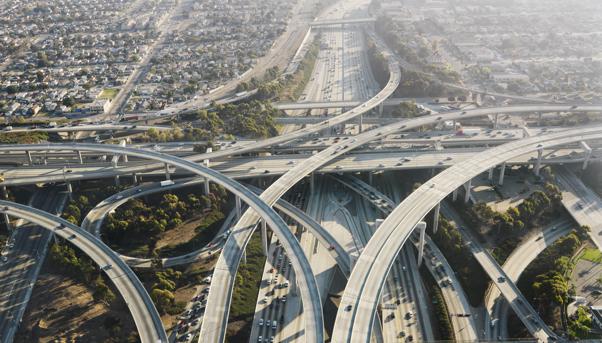
In 1955, Dwight Eisenhower, the then President of the United States, said «a modern and efficient transport system is essential in order to meet the needs of an ever-growing population, of an expanding economy and of our national security».
Sixty years later, the big U.S. infrastructure challenge has returned as the economic crisis that in recent years contributed to a contraction in the country’s transportation system investments.

According to a report entitled “An Economic Analysis of Transportation Infrastructure Investment”, prepared by the National Economic Council and the Council of Economic Advisers of the White House, 65% of the main roads in the Unites States are not in good condition, one bridge out of four needs significant repair or cannot support traffic any more, while 45% of U.S. citizens do not have access to public transportation. Each year, people spend 5.5 billion hours in traffic, with a cost for families in extra fuel and wasted time amounting to $120 billion. Nike, the U.S. sport apparel giant, just by itself, spends $4 million each week on delays in the transportation of its goods.
All this – explain the White House analysts – in a country with four million miles of roads and 600,000 bridges.
An iassue that is inevitably connected to the lack of investment that, for many yers now, seems to characterize the sector. In 1962, public expenditure on infrastructure was equal to 3% of GDP. Today, the country has reduced it to 1.4% – less than half. The drop has also been certified by international organizations. The last Global Competitive Index of the World Economic Forum places the United States in 10th place in the world for investment in transportation, at 18th for roads and 19th for the quality of its infrastructure – a position ahead of Italy, but behind countries like Ireland, Greece, Poland and Slovenia.
The issue, once again, is economical. In this regard, in 2014, President Barack Obama included in the Grow America Act a four-year investment plan for the infrastructure sector worth $302 billion. The plan was then taken to six years. The act is even more important as it was launched a few months before the Highway Trust Fund (the fund that finances road transportation) began to deplete its resource.
Obama’s plan was relaunched on February 2, 2015, when the President presented his 2016 Federal Government budget proposal. Within the $4 trillion total, $94.7 billion (31% more compared to the $72.1 billion allocated during 2015) should go to the Department of Transportation, adding themselves to the loans programmed under the Grow America Act.
Actions for relaunching infrastructure spending are nothing new. In 2009, during the full turmoil of the crisis, the Recovery Act brought $48 billion to the so-called Tiger programme (Transportation Investment Generating Economy Recovery), allowing the Department of Transportation to invest in the most critical cases. According to the U.S. department, the programme contributed to improving 42,000 miles of roads, to investing in 2,700 bridges and to allocating funds for 12,220 public transport vehicles.
The U.S. government, in its plans to develop this sector, wants to reach two objectives: firstly, to modernize infrastructures and, secondly, to promote business and employment.
The data of the U.S. Bureau of Labor Statistics reveal that 68% of the jobs created through the investments in infrastructure belong to the construction sector, 10% to the manufacturing industry and 6% to the retail sector. The remaining jobs belong to minor sectors.
In 2014, investments helped create 186,000 jobs in the construction sector, but the unemployment rate of 9.9% still remained very high compared to the country’s average rate. If we take a look at the effects caused by the crisis, from 2007 to today, the number of workers has fallen by 20% and it will take many years to return to the previous levels.

Los Angeles
A more immediate return from the investment plans will probably impact the economic condition of U.S. families.
The White House’s analysts calculated that the cost item “transport” in the total of average expenses of a family was the second biggest but it came before food. A family spends an average of $17,041 on the management of its house, $8,999 on transportation and $6,598 on food.
Economic relaunch, employment needs and infrastructure modernization are some of the important topics. But there is another motive that influences the choices of the U.S. establishment and public opinion: the opportunity of “rebuilding America”. A philosophy that came with the New Deal after the Second World War, when the economic recovery of the country was promoted by significant investments in the public sector and through the commitment of private companies. This great determination gets its strength from the knowledge that the global leadership that the U.S.A. has gained in many sectors is thanks to the great commitment shown by its men and women in building large infrastructure works.
The photo taken on September 19, 1932 and published a few weeks later in the New York Herald Tribune of workers taking lunch while sitting on the main building of the Rockefeller Center, or the images of the inauguration of the Brooklyn Bridge in 1883 or of San Francisco’s Golden Gate Bridge in 1937 have all circles the globe, becoming the symbol of a dynamic country, engaged in using its best resources to build a better future.

